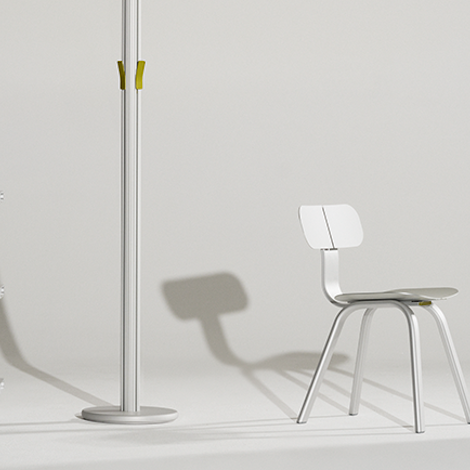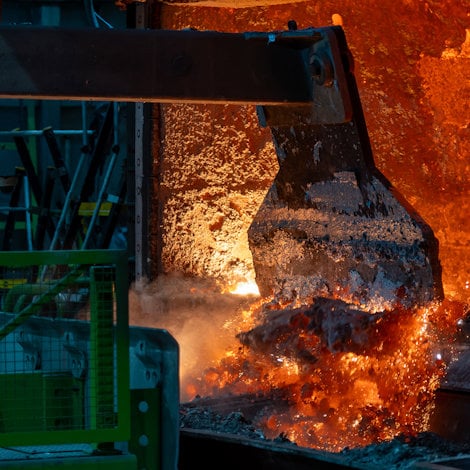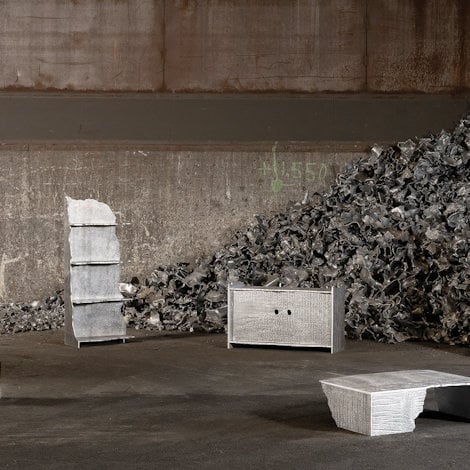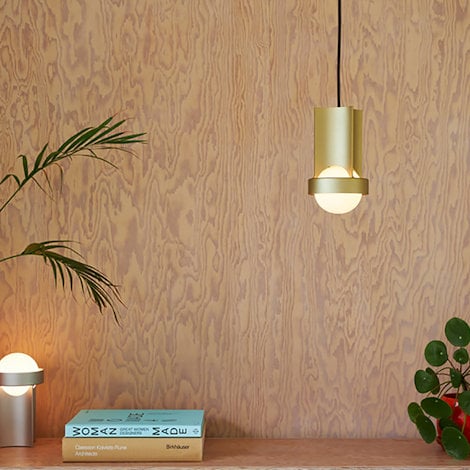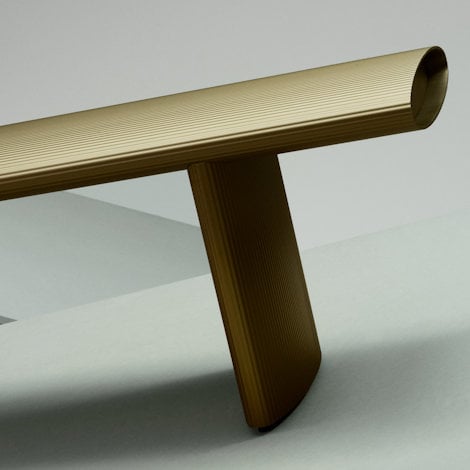How we calculated the carbon footprint of near-zero aluminium used in Milan
The fact that we call it near-zero aluminium gives you a good indication that the carbon footprint of this metal is going to be close to nothing. Still, I have done the calculations on actual products that used the aluminium, and the results beat my expectations.
Hydro asked seven industrial designers to design furniture products using near-zero aluminium for Milan Design Week 2024. After the show, I calculated the environmental footprint of these products.
We could not, for various reasons, perform a complete life-cycle analysis for the Milan designs, so we chose to carry out a streamlined carbon footprint calculation. I assessed each of the designs, part by part.
My calculations considered the near-zero metal as well as the operations, such as transport, extrusion, surface treatment and fabrication.

Precise process for calculating carbon footprint
The Milan designs used 6xxx-series extrusion ingots made from Hydro CIRCAL 100R, an aluminium product with post-consumer scrap (PCS) content of at least 99.5%.
Prior to the actual recycling process, most of the PCS had been shredded and sorted to remove all foreign materials, ensuring an aluminium fraction close to 100%. It was then treated in a casthouse for de-lacquering. This phase removes the organic content from the material through pyrolysis, where gas heated to 500 degrees burns off the paint. The hot gas – now rich in hydrocarbons – is blown into a specially designed combustion chamber in the melting furnace.
Why? Because utilizing the energy embedded in the paint in this way, reduces the total energy consumption in the melting process by around 25%. Brilliant, right?
Low-carbon aluminium with a footprint well below the global average
Now, getting back to the production of Hydro CIRCAL 100R.
Recycling aluminium requires only 5% of the energy required to produce primary metal. As a result, the direct and indirect emissions from the plants recycling the aluminium are small in comparison to the emissions connected to the production of primary aluminium.
Furthermore, indirect emissions from raw materials are low when recycling waste such as PCS. This type of scrap has no contribution because as a product that has already completed its life cycle, it is considered waste, with no environmental impact, except for transport between the handling site for the used aluminium and the recycling plant.
No process scrap or primary aluminium is added to CIRCAL 100R. Consequently, the impact of the product on climate change (GWP-Total in kg CO2e/kg Al) is minimal when compared to other aluminium products on the market.
Recycled and low-carbon aluminium with a tiny footprint
My calculations showed that the carbon footprint of the near-zero aluminium used in the products displayed at Milan was less than 0.5 kg CO2e per kg aluminium. This is 16 times lower than average EU aluminium and 35 times below the global average – tiny in comparison, and a massive achievement.

Let me use John Tree’s Billet Chair as an example. I calculated the five separate pieces of this minimalist chair: the chair structure, backrest, left and right seats, and end cap. The total weight of the aluminium was 5 kgs. The combined carbon footprint calculation for the aluminium used for these five pieces was 2.1 kgs CO2e.
That translates into 0.416 CO2e per kg aluminium, which is, again, an impressive achievement. The collaboration between all of the principal persons and companies involved in this project has to be considered a success.




